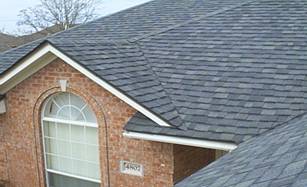Early home designs, particularly ones constructed from the 1960’s to the late 1980’s, relied a great deal  on asbestos. It was one of the most commonly used reinforcing fibers in various home construction materials. Now that its harmful effects are well known, it is no longer used in many of its previous applications.
on asbestos. It was one of the most commonly used reinforcing fibers in various home construction materials. Now that its harmful effects are well known, it is no longer used in many of its previous applications.
Definition
Asbestos is a natural-occurring fibrous mineral used because of certain desirable properties including: tensile strength; resistance to heat, fire, corrosive chemicals; and even sound absorption which makes it an ideal building component. It was most commonly mixed into cement as a form of reinforcement to create fiber cement.
The use of asbestos in the United States started around 1858 and the mineral was obtained through mining. During the industrial revolution, the need for a low-cost insulation material pushed its widespread use. As time went on, most building components were known to contain the substance.
It was used extensively for manufacturing various building components ranging from fire retardant coatings, bricks, concrete, pipes, fireplace cement, fire resistant gaskets, insulation, drywalls, ceiling installations, flooring, and fiber cement shingles.
By the early 1900’s, researchers noticed a growing number of lung problems and early deaths near asbestos mines. This industry, along with the United States government, has been heavily criticized for not informing the public about the dangers associated with this material where in the United States alone, an estimated 100,000 individuals have died or will die due from exposure to the substance. Because of that, asbestos was completely banned in 2003.
Health Risks
In its natural state, this substance is made up of long strands of fibers that can easily fray. While most construction materials such as fiber cement have deeply woven asbestos, the cement can wither over time exposing the friable fibers and causing it to become airborne. Prolonged exposure and inhalation of the fiber can lead to various health issues.
Mesothelioma is a type of malignant cancer that is common in individuals working with or around the material. In this health condition, the transformation happens in the cells of the protective lining of the internal organs. Other health issues include: asbestosis or progressive fibrosis of lung tissues; pleural plaques or the thickening of areas within the pleural cavity; and warts due to sharp fibers lodged in the skin.
Inspection and Removal
Due to its extensive use in both commercial and residential buildings with the known health issues, it is important to conduct an inspection especially on older homes that were built before the material was phased out in 1989. There are companies that provide such services including an onsite inspection, material testing, and recommended corrective solutions in case asbestos is found.
It is important to know that not every asbestos installation has to be removed. Removal is only recommended if the material is exposed and in a friable state and has a tendency to be released in the air. If removal is required, it is best to hire a professional asbestos removal service. When hiring a company to do this job, always ask for their accreditation and training documentation, since handling and disposing of the substance requires government-mandated procedures.
Asbestos is a serious health hazard and working with it should be avoided. Homes built before it was totally banned should be professionally checked for such threats. Hopefully this article has provided helpful information regarding the dangers associated with this material and how it should be handled or eliminated if it is present!
Call Schulte Roofing if Looking for a Roofer Houston!
Are you searching for a roofer Houston company to help with an asbestos problem? Schulte Roofing handles the Houston metropolitan area and can be contacted at 800-367-7663 to help Houston customers with all types of roofing needs!
